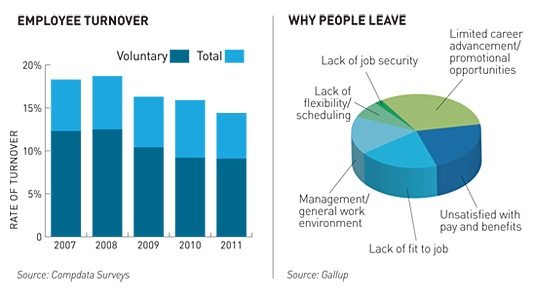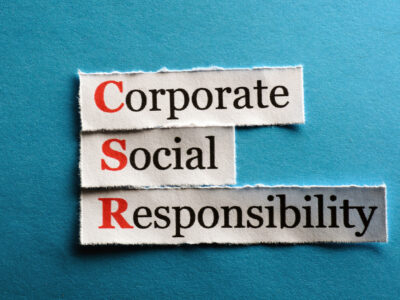Employee turnover plays an important role in keeping a company healthy. High turnover rates lead to high losses that can ruin a business. Turnover stems from a multitude of reasons so, prevent the bad from happening and watch what good can follow.
Why are your employees leaving??? Turnover comes in two forms:
Voluntary turnover is when an employee quits or leaves on their own terms. This could include, but is not limited to, poor working conditions/culture, insufficient career planning that is offered, or poor compensation. These are all caused for turnover that can be avoided. You can fix what you can control.
Involuntary turnover is when an employee is fired or laid off by the company. Downsizing might need to take place for an organization’s survival. Illness and death are also reasons and reasons that you can not influence. Every company has some rate of turnover because not everyone stays all together, forever, at the same job.
Pay attention to all forms of employee turnover.
Involuntary turnover can be a long-term result of high levels of voluntary turnover. Knowing the cost of turnover is enough motivation to try and avoid it. With a high turnover rate, a company is subject to indirect costs and direct costs. Indirect costs include paying recruiters to find you a new employee and direct costs includes revenue lost while you were understaffed. The higher the turnover rate, the higher these costs will be. Don’t just expect to pay money. Other loss includes time, knowledge and morale. You will spend valuable time recruiting and training new employees. In addition to this loss, employees take knowledge when they leave. That knowledge will take time and money to get regain through more training and experience. Do you see the pattern? Basically, employee turnover = major loss.
Fix what you can control.
Hire the right people.
The hiring process is a good place to nip turnover in the bud. Take preventative action and hire the right people. Even though many candidates might fit the bill skill-wise, you need someone who will also easily adapt to your company’s culture and other employees. If you have an employee who isn’t meeting expectations, they may be hurting the company beyond the scope of their individual role by having a direct negative impact on the productivity of others and reducing morale. Replacing them with someone who will actually be able to do the work is the only way to solve the problem. Start at the root and prevent this by hiring strong candidates from the get go.
Communicate.
Always be on the same page as your team. Accommodating your employees’ needs is important because it makes them feel valued. Let your team know that everyone’s voice is heard. Open lines of communication can also give you a heads up if someone is thinking about leaving. If you know in advance, you might be able to fix the issue and help them stay.
Reconsider salary and benefits.
An employee will leave a company because they feel they are not receiving enough salary (or benefits) based on performance and responsibilities, or sometimes based on need. These are crucial factors in retaining employees, especially for millennials joining the workforce. Typically the better the benefits, the lower turnover rate. This holds true with offering a flexible schedule and tuition assistance. Be generous with deserving employees, or it will only cost you when they leave.
Engage employees.
Good salary and benefits is not enough to keep your employees. If you want a low turnover rate, you must work on engaging your team. If they aren’t happy with the workplace culture and are bored at work, they just might decide to leave. At the very least, they’re likely already less productive. Engagement tools will help you reach your employees and make them feel better about coming to work. People have no reason to leave if their needs are met and they’re happy.
Be a good leader.
Often times, employees leave managers not companies. There are many negative effects of bad management on employees and a high turnover rate is one of them. At the end of the day you have a lot of say and control over what happens within your company. If not, consider the fact that your team has even less power. Great management enhances the success of everyone on the team.









